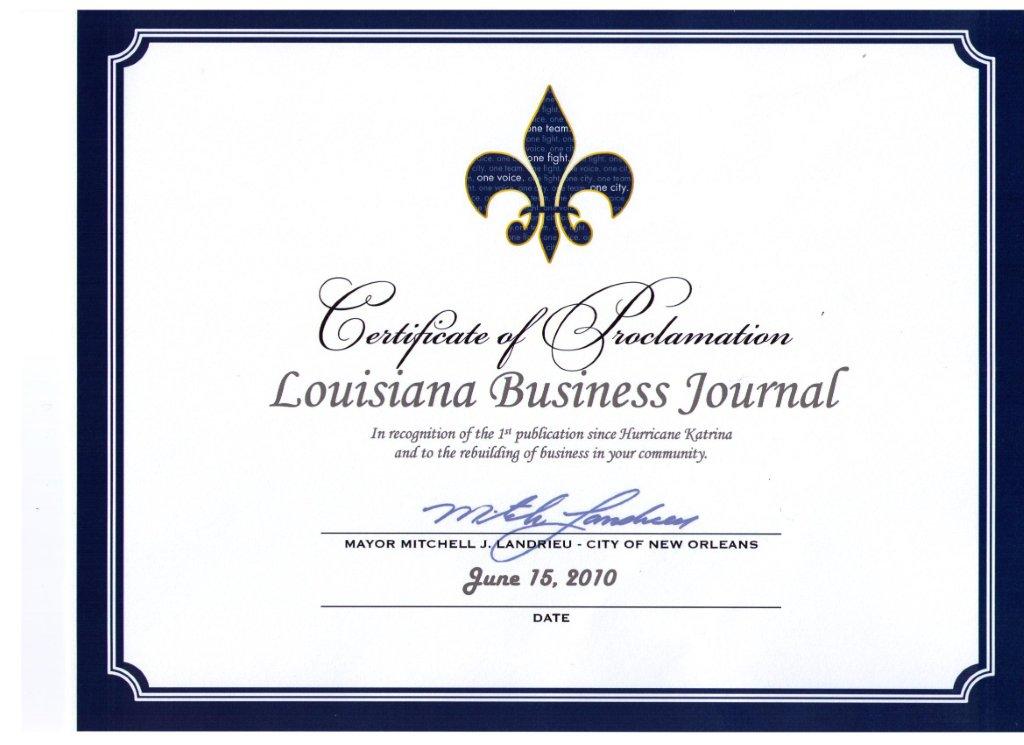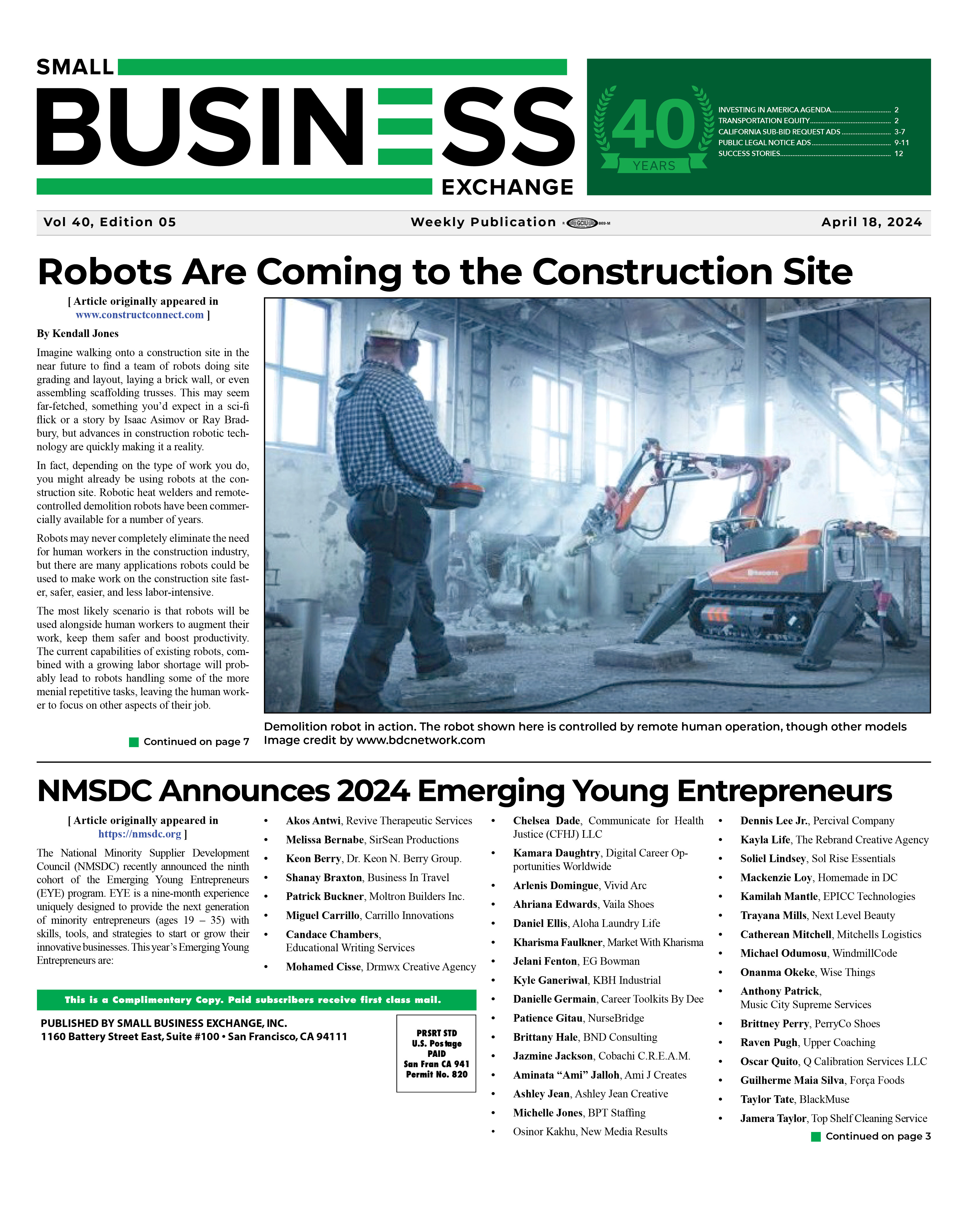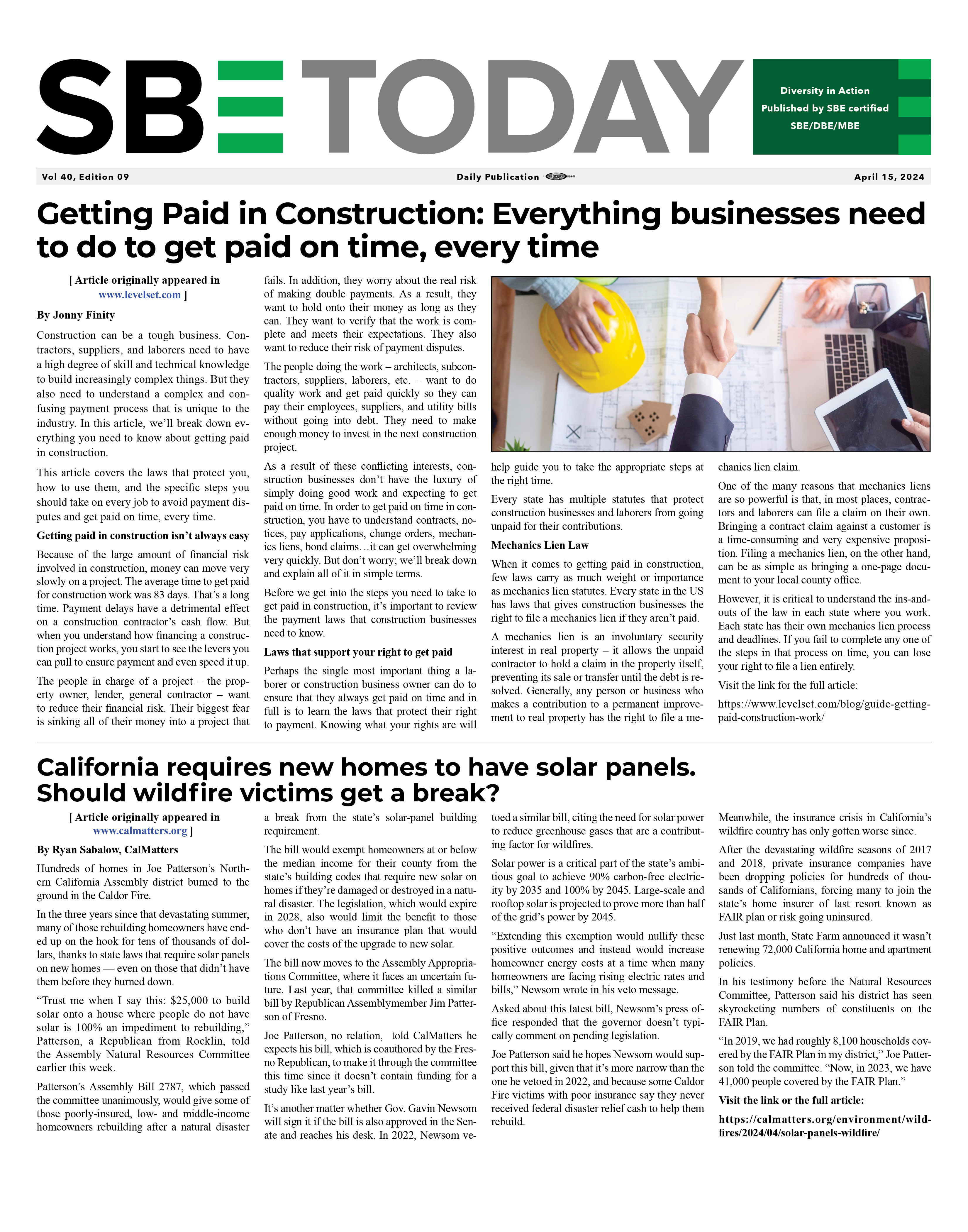Strategies for Embracing Flexibility in Construction Management
08/12/2020
[ Article was originally posted on www.constructconnect.com ]
By: Holly Welles, The construction industry can be volatile and unpredictable at the best of times. With the coronavirus pandemic sweeping the globe, construction work is taking a hard hit. Projects are getting delayed and even canceled as regions open and close to try to slow the virus's spread. Flexibility is becoming a necessary part of business, especially if employers want to survive and thrive through these uncertain times. How can construction managers embrace flexibility as they begin adjusting to this new normal? Embrace Software and AutomationAutomation is making its way into nearly every industry around the globe, and construction is no exception. In these uncertain times, embracing automation and its accompanying software could mean the difference between a business surviving the pandemic or being forced to shut their doors. Many common tasks in this field would respond well to automation, freeing skilled workers to dedicate their talents and work hours to other jobs. In response to COVID-19, automation could allow worksites to continue operation despite the closures keeping workers at home. Some robots, like the Semi-Automated Mason, or SAM for short, can lay upwards of 2,000 bricks in a day. That's five times what a human mason can accomplish in the same amount of time. This machine is just one example of the technologies construction companies can adopt. Taking the time to embrace automation could potentially keep operations moving when and if state legislation mandates more lockdowns to prevent the virus from spreading. Reduce Hard Costs and Operating CostsIt's challenging to maintain things like payroll and expenses when lockdowns shut down job sites and there is no money flowing into the company. One way to keep things afloat while business owners wait for things to go back to normal is to cut hard costs and reduce operating expenses. There are numerous ways to approach this plan, depending on a company's immediate needs. Consider improving business processes by adopting unique innovations, such as the automation mentioned above. This step might require a significant initial investment, but if it can secure a swift return on investment (ROI) and reduce overall costs, it may be worth the expense. Now may also be the perfect time to invest in rented or used equipment to supplement a company's fleet when it’s needed. Used equipment might not represent the newest options available on the market, but when purchased from a licensed reseller, it does provide a reliable and cost-effective option for moving projects forward. This can allow firms to maintain flexibility as soft costs like labor and safety management shift over time. Manage Smaller Teams With Rotating ShiftsMasks and social distancing are some of the best tools the global population has to combat the spread of this virus, at least until a viable cure or vaccine becomes available. That can be challenging in the construction industry, with large crews working in close quarters throughout long shifts. It won't take much for these scenarios to become potential superspreader events for the virus. According to the Occupational Safety and Health Administration (OSHA), most construction tasks are low risk as long as workers can remain 6 feet apart. Once you move into indoor spaces or areas with people who are sick or have been exposed to the virus, you start approaching medium and high risk. One potential solution to this problem is to manage smaller teams. Keep the smallest amount of employees on-site at any given time. If there aren't enough people to complete the job in a single shift, switch to rotating shifts throughout the day. On any given day, there are 24 hours to work with. Split that into three or four rotating shifts and maintain your operations while keeping employees safe and virus free. Planning for Project Flexibility in ConstructionSix months into the COVID-19 pandemic and businesses and individuals are still learning how to navigate this new normal. It will take some time for things to start falling into place, and longer still for them to return to normal once a cure or vaccine hits the market. Flexibility in construction management is essential to helping businesses thrive in these uncertain times.
Construction managers need to look closely at their current practices and see where they could be more flexible. They should also determine where they can make the necessary changes to keep their employees both safe and productive throughout this pandemic. Business owners need to start planning for the post-COVID world now before it sneaks up on them in the coming months and years. Back To News |
|
|
|
|
||
|
© 2024 Small Business Exchange, Inc. |
||
|
|
||
|
|
||
|
© 2024 Small Business Exchange, Inc. |
||







